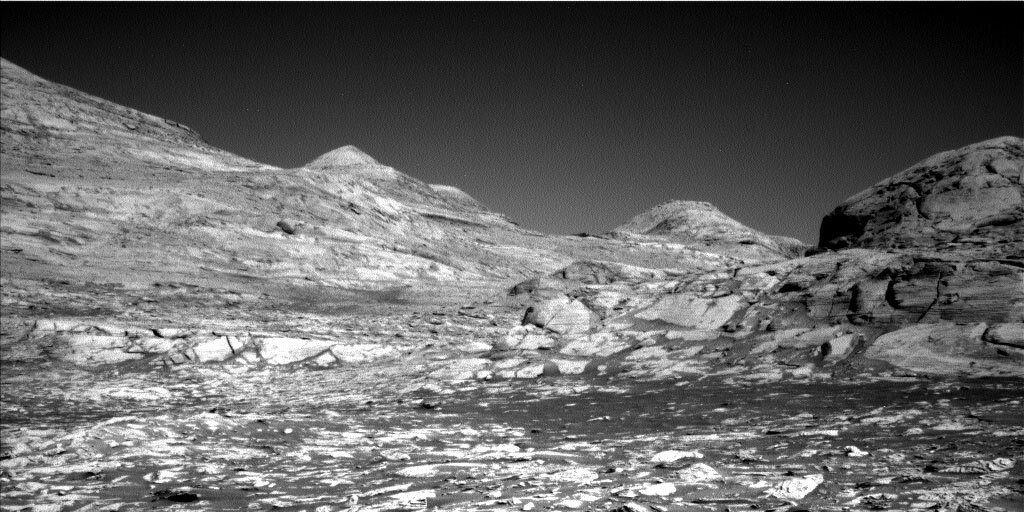2 min read

Since the early part of 2021, Curiosity has been continuing her drive up Mt. Sharp with the the ~140 m tall Rafael Navarro Mountain as a familiar reference point. Now that we have ascended a significant portion of Mt. Sharp and have started a southward drive to approach the Greenheugh Pediment, we are about to lose sight of parts of Rafael Navarro Mountain behind some other hills for the foreseeable future. Before we lose this view, however, Curiosity is prioritizing some long-distance imaging of Rafael Navarro Mountain to make sure that we don’t miss out on any interesting and valuable observations.
In today’s one-sol plan, Curiosity will start her science operations with some arm activities, including MAHLI imaging and APXS chemistry measurements of the "Ashlar" target, which is a finely laminated sedimentary rock that is heavily fractured with veins and potential nodules. Following arm activities, Curiosity will conduct a handful of remote sensing activities, including acquiring a multispectral image of the "Denburn" float rock target, a ChemCam LIBS measurement of the "Ashlar" bedrock target, and several Mastcam mosaics of targets including near-field layering, the Greenheugh Pediment, and Siccar Point. Lastly, ChemCam will be used to acquire a high-resolution imaging mosaic of Rafael Navarro Mountain from this fleeting vantage point (in the associated image, parts of Rafael Navarro Mountain can be seen to the left, while more local hills that will be blocking Curiosity’s view of Rafael Navarro Mountain in the near future are visible on the right).
After another drive to the south, Curiosity will acquire a standard suite of post-drive imaging before standing down for the evening and recharging before the next sol’s science activities.
Written by Mark Salvatore, Planetary Geologist at University of Michigan







